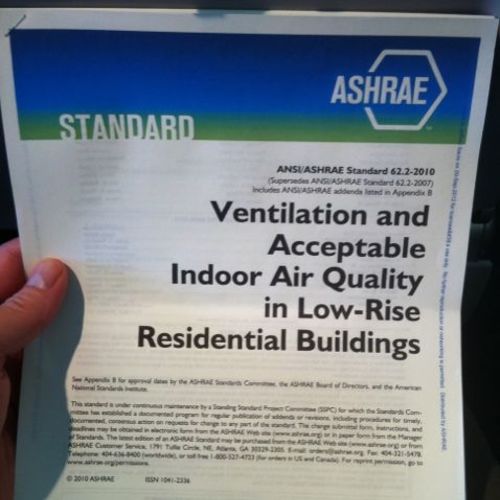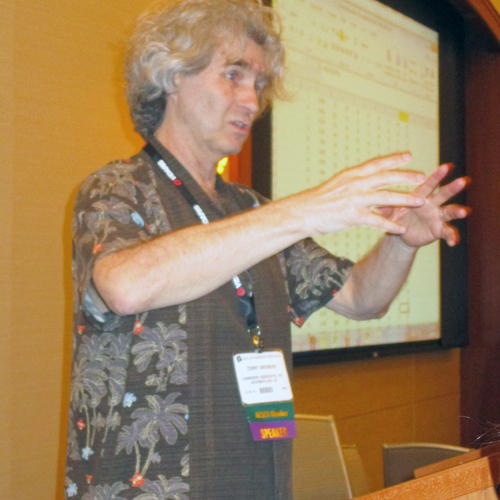
When researchers look at the effectiveness of ventilation systems installed in new homes, what do they find? To some extent, the answer depends on what area of the country you’re talking about, but we can safely report that:
- In many cases, ventilation systems haven’t been properly installed.
- In most cases, ventilation systems haven’t been commissioned, so airflow rates haven’t been measured.
- In many cases, occupants don’t understand how to turn their systems on and off.
- In many cases, occupants have disabled their ventilation systems, either wittingly or unwittingly.
Let’s look three recent field studies: one in Washington, one in Florida, and one in California.
The 2014 Washington study
In 2014, six researchers — David Hales, Ken Eklund, Rick Kunkle, Michael Lubliner, Adria Banks, and Charlie Stevens — performed a field study of ventilation systems in 29 homes in the Pacific Northwest. Their report, “A Field Study of Ventilation System Effectiveness in Low Air Leakage Residences,” is available online.
The systems were pre-screened. The ventilation researchers only included systems that were able to meet the requirements of the ASHRAE 62.2 standard. So right off the bat, a lot of ventilation systems were excluded, simply because they weren’t properly designed or installed.
The 29 homes included a variety of systems, including exhaust-only systems, central-fan-integrated supply ventilation systems, HRV systems, and ERV systems.
Here’s a key finding of the study: Most of the occupants of these homes didn’t know how to operate or maintain their ventilation system.
The researchers wrote, “The fact that over 90% of the occupants were satisfied with their system performance and indoor air quality even though over half of them did not have enough knowledge to operate or maintain the system is troubling, especially where the lack of knowledge correlates with unresolved operation and maintenance issues found…
Weekly Newsletter
Get building science and energy efficiency advice, plus special offers, in your inbox.

This article is only available to GBA Prime Members
Sign up for a free trial and get instant access to this article as well as GBA’s complete library of premium articles and construction details.
Start Free TrialAlready a member? Log in















28 Comments
Oh, we have so much work to do. I was hoping this was just a problem in my neck of the woods and the rest of country had it figured out. The number of problems I encounter in the houses I do work with have given me a depressing perspective on the number of problems that must exist out there. I'd like to add three things...
A little bit of this could be put on manufactures. I've never seen a ERV/HRV control that wasn't either over complicated, inadequate, or both at the same time; and always indecipherable to the homeowner (sometimes to me and I know what it's suppose to do). Exhaust-only controls are designed so aesthetically pleasing nobody even knows that it's there or what it does. At the same time, nobody wants a yellow sticker next to their pretty Decora switch that says "Whole House Ventilation".
The home performance community should probably be focusing on helping HVAC contractors understand the whole house ventilation systems they are required to install more so than heating and cooling loads. People are likely to complain if they're uncomfortable but are rarely aware of poor air quality.
Whole house maintenance contracts need to be normalized as a cost of ownership. People seem more task loaded than ever before. The idea that the average homeowner should have the knowledge or the time to maintain their increasingly complicated home is now officially ridiculous in my opinion.
Andy,
Excellent points. In addition to your advice to manufacturers to improve the simplicity and adequacy of ERV and HRV controls, I have further advice for manufacturers: It's time for installation instructions to emphasize the importance of (a) dedicated ventilation ductwork, and (b) commissioning.
I agree that it's unreasonable to expect homeowners to understand all of the technical ramifications or maintenance requirements of their HVAC systems. For more on this issue, see "Do Homeowners Need to Understand Home Performance?"
The home we built 6 years ago had an ERV installed. It was a real disappointment right from the start. Both the intake and the exhaust were installed on the northwest side and allow 10 deg. air to cycle through the house on windy winter days, regardless of the status of the system. The also was no duct work run to any of the second floor bedrooms.
I have decommissioned the system and plan to add motorized gates in the intake which will be linked to the bathroom exhaust fans.
This is interesting. It sounds like air is coming in through the ERV while conditioned air is leaving the house through the bathroom and exhaust fan ducts. With the ERV running, I wouldn't think it could be overpowered like that. When it's not running... I'm not sure what's supposed to prevent that. It's not an issue in my house, as the HRV intake and exhaust are the only air paths to the outdoors, aside from windows and doors.
The norm in my area is a fresh air vent from outside into the return duct, like a CFIS without the controllable damper and fan control. Its pretty crappy compared to a properly designed and operating ventilation system, but maybe that is not the right comparator. Relative to a ventilation system that is turned off, it is an improvement.
Reid,
In an article I wrote several years ago ("Designing a Good Ventilation System"), I described the type of system you are talking about:
"To reduce costs, some builders install the lazy man’s version of a central-fan-integrated supply ventilation system — one that includes a passive fresh air duct to the return-air plenum, but without a motorized damper or AirCycler control.
"What’s wrong with this approach?
• During the swing seasons, when the furnace fan isn’t operating, the house won’t get enough fresh outdoor air, and homeowners may complain of stuffiness.
• During the rest of the year, when the furnace fan is operating regularly, the house will be overventilated, resulting an a severe energy penalty. During the winter, all that unnecessary cold air will need to be heated; during the summer, all that unnecessary hot air will need to be cooled and dehumidified."
I was definitely not advocating for such a system. I was adamant that my house have a better ventilation system than what is typical in my area. My point was just that getting too little ventilation part of the year, about right some of the year, and too much part of the year is a step up from getting none all year, which is what you get from a properly designed system that is switched off.
"It means that occupant satisfaction is not a good indicator of ventilation system performance"
This should surprise no one, since the vast majority of people still live in homes with effectively zero ventilation a significant portion of the year, and few of them are complaining about air quality.
My experience completely matches these studies: controlled mechanical ventilation systems that are improperly installed, not commissioned, or just switched off. Example: ventilation was supposed to be provided by continuous running Panasonic exhaust fan; electrician just wired it to respond to wall switch control, so it never ran.
However, I have one point that might be slightly optimistic. With the proliferation of consumer-level IAQ sensors (Awair, Foobot, etc.), there are *some* consumers who will actually have some feedback on interior conditions, which provides metrics on ventilation systems effectiveness. So perhaps they will take action based on this feedback.
For example: I live in a 1910 triple decker in Bosto-Camber-Ville, MA... pretty leaky old construction. However, my Awair made it pretty clear that nighttime CO2 levels have been going way up during swing season, with almost no HVAC runtime. And this was even worse when the in-laws were visiting (4 people, 1000 sf). Despite construction that would suggest ventilation is not warranted, I'm planning on installing a system.
Second example: anyone who uses these types of IAQ sensors realizes that PM2.5s spike like crazy during cooking... I hadn't realized just how bad it was until I got one. I now run the kitchen exhaust fan religiously, and we've added an indoor air filter. I even got to see PM2.5s spike while we were out of town--the folks on the second floor were cooking Thanksgiving dinner for a bunch of folks, and stack effect pulled it up into our unit.
Thanks, Kohta. I live in the same area, with probably similar construction, and I have the same concerns about nighttime CO2. Thanks (seriously) for reminding me that I don't have to feel silly about considering installing a mechanical system even before the house gets seriously tight (if it ever does).
Kohta,
Your CO2 and PM2.5 readings are certainly of interest to -- I'm guessing -- about 15% of GBA readers, and to about 0.5% of the U.S. population. Thanks for sharing your findings.
While the information is useful to anyone willing to pay attention, I'm more doubtful than you are concerning the question of whether air quality monitoring will improve ventilation system effectiveness in the average U.S. home.
I guess maybe I'm glad we sprung for the pricey Zehnder HRV. One control: High, medium, low and off. Boost switch: 10, 30, or 60 minutes. Zehnder designed the system, with the design reviewed by our architect. Zehnder came out to commission it and said just leave it on medium. Filter changes take literally seconds.
RE: reply to Kohta
Martin....Ouch! Having a bad day? Should we start giving you a percentage grade on everything you post? I think Kohta was trying to contribute to the dialog, if you don't find it interesting, just leave it alone.
Kye,
I hope that Kohta (who I know well) understood my point -- which may not have been obvious to all readers. I am certainly among the 15% of GBA readers who appreciates Kohta's data. Kohta is a well-known researcher who has contributed immeasurably to our understanding of ventilation issues and indoor air quality.
The statement that information about indoor CO2 levels and PM2.5 levels is of interest to a very tiny segment of the U.S. population is no reflection of whether the information is valuable. Of course it's valuable.
The nerds who gather on GBA to discuss CO2 levels and PM2.5 levels get smarter every year, and we're getting much better at figuring out how to ventilate homes. The problem, though, is that most Americans don't have decent ventilation systems. I don't have a solution to this problem, but it is a real problem.
Kohta would probably agree that we can't solve the problem by educating American homeowners about better ways to monitor CO2 and PM2.5 levels. The solution, which is still elusive, lies elsewhere.
Hi Martin--for the record, no offense taken! :)
To take a second pass at explaining my post: it seems like these IAQ monitors are marketed towards a higher-end mass market consumer level. I.e., the Whole Foods organic shopping, Nest-owning, gadget-loving, BPA-bottle-avoiding demographic, as well as other affluent segments. Folks who own these IAQ sensors will have a pretty clear feedback loop on whether their ventilation systems are working, or if their systems are just making noise and doing nothing.
From there, perhaps these IAQ sensors could possibly spread. By way of analogy--people who own WiFi-enabled thermostats are not exclusively gadget geeks or ultra-wealthy.
Perhaps word would spread from there. For instance--one person in a new subdivision has an IAQ sensor, finds his ventilation system is doing nothing, and word spreads within that subdivision--i.e., "... have you checked your CO2 level like Bob did?"
Another analogy--five years ago, what fraction of the country was familiar with PM2.5? But with the massive California wildfires, I'm guessing a lot more of the West Coast knows the term.
This all comes back to a fundamental problem with ventilation systems (as we all know): most of the population has no idea what they're breathing, so nobody has any reason to check or do anything about ventilation systems.
Kohta,
I hope you're right, and that an increasing segment of the population leans on their backyard fence, talking with their neighbors about indoor CO2 levels (rather than the Red Sox).
It's a heart-warming but unlikely scenario -- one that brands you as an optimist.
Hah! Nah, wasn't going that far. It's also funny to be called an optimist--the way the scenario above played out in my head: a builder client getting a class-action lawsuit for non-functional ventilation systems in his subdivision. ;)
What would be the best control system for an uneducated occupant (99% of the population)?
- Feedback control based on CO2, factory preset to something like 1000 ppm.
- A light clearly labelled "change ventilation filter" that goes on based on runtime since the last time the housing was opened.
- Boost based on bathroom lights.
Reid,
That is the question - and I think what Martin was alluding to in his response to Kohta. For many of us here in GBA the ideal system may involve the ability to fine-tune and otherwise constantly monkey around optimizing it.
Your suggestion makes a lot of sense to me - but I wish there was some way to communicate with owners what the system is designed to do.
For the last few years we have had code mandated full-time mechanical ventilation here in BC. In almost tall cases the system runs without owner's input. The only control they have being a discretely located, but prominently labelled 0n/off switch. I meet a lot of owners and builders who have turned off the systems. They say they are unnecessary, noisy and expense to run. They do this in the absence of any explanation for why the code mandated their inclusion.
These are probably just teething pains, and as long as the systems don't rely on too much owner input and prove dependable, they will eventually be accepted as just another thing, like smoke detectors, that houses include. I do wish there was a simple way for owners to be told why they are there and how they work, but I don't know what that would look like. It almost certainly isn't including more air-quality monitoring that the owner need to see.
Reid,
I've traditionally been reluctant to over use technology in a home. So, blame it on too many "Iron Man" movies but over the last year I've settled on the fact that humans are not hard wired to think about light unless they can't see or air unless they can't breath. So I gave up and put a vacancy sensor in my son's room. He's actually a pretty responsible kid but, despite years of nagging, he leaves the light on all the time. Why not though, my wife leaves the basement light on a lot as well. As an industry we definitely need to embrace the fact that it would probably be easier to get a 9 year old to turn the lights off than to get the average homeowner to actively think about ventilation. All evidence points to impossible.
So, yes, whole house ventilation should probably operate on some kind of proxy for air quality, CO2 is a good place to start. Skip the filter light, people need to setup a regular whole system maintenance schedule reminder with a professional or themselves (including a checklist)(this feels like a phone app waiting to happen). Bathroom ventilation should kick on with high humidity (showers) or occupancy. And I think range hoods should absolutely be automated as well. Most importantly all of it has got to be quiet.
Also, another reason for pushing HVAC and even Builders into maintenance (seriously it could be a business model) is that it would help them see what is and is not working. One of my realizations in home performance is that most builders and HVAC contractors don't even know about many of the things they're doing that don't work very well or at all.
I'm with you Andy and I might go one step further - I don't even think an app would work. For the average homeowner this stuff is just completely off their radar. I think it has to be something the builder or HVAC contractor manages. I'm installing an ERV in my current project and right when I hand the keys over I plan to strongly "suggest" that the homeowners sign up for a reasonably priced service contract with me to come change filters, clean cores, etc every few months. Once they agree to that at the end of the project then it lives in my world and I know it will get done. And as you said, added benefit for me of checking in on how things are working.
Well, cars have a light that comes on when its time to change oil. Why can't we, or the manufacturers, build something like this in to the package? Maybe have some type of consequence (fan stops working when you want to take a shower, beeping or blinking, etc). Also, why don't we have a central screen in our "smart homes" that includes this info, as well as CO, RH levels, current energy use and cost, etc.. If we want active homeowners, lets give them the information and easy access so that they can respond.
There is a movement soon to be afoot. Call it the home unplugged movement. Our homes have long since become smarter than we are. Even in the rarified community of those plugged into a Martin Holladay article thread, there is more to our homes' ventilation intelligence than most of us can, or want to, master. There is a great deal more gadgetry in the average modern home than the ventilation system. Most of it can be monitored and controlled from the iphones we stay glued to. Is that the future we want to design for ourselves; the keepers of our stuff? Most people, myself included, want a home for which we do not need higher level learning to master one of its many systems. Even in the very unlikely circumstance in which an ERV is properly installed and operated, I wonder for how much of the country it provides a return on carbon footprint. It seems that a passive house is anything but passive. I'm sure this Luddite perspective is not all that different than the objections to all those moving parts in the first automobiles. Okay, that's it. I'm headed out to the screened in porch to cool off and get some fresh air.
Hugh,
Since my house is off the electrical grid, and since my house lacks a ventilation system, and since I sleep with the window open, I get where you are coming from. That said, most Americans don't want to live the way I do, so more general solutions are still needed.
Right. How do we provide wise homes that do not require a level of maintenance that will not be done? It seems from your article that we have missed the boat to this point. The missing information is less in building science and more about behavioral science. Green build continues to be about the relationship of the building to the environment. Important as that relationship is, it is secondary. The primary relationship is between the people in buildings to their environment, including their relationship to the technology in their home. The problem is that it is a lot easier to measure and monitor buildings than it is people.
To everyone who contributes articles and comments, especially Martin, thank you, I have learned so much!
I live in Eastern CT. and now it's May and I'm beginning to smell air coming down the chimney through my wood stove. Time to block the exhaust again, what a pain! As the air starts getting warmer and wetter and the stack effect decreases, the path of least resistance becomes my chimney, instead of that 4" vent I cut into my cellar rim joist in the mechanical room. This 'trickle vent' works well in the winter. It has a backwards installed dryer flap that acts as a check valve that opens more when any exhaust fan in the house runs, including the System 2000 oil fired boiler I have, and/or my wood stove. It also, provides enough fresh air for my wife and I (30 cfm minimum is a good number for my particular house). When the kids come home I watch the CO2 go up over 1000 ppm.
Soon I'll need A.C. and have to turn off the Air Handler fan that's been keeping the whole house at a pretty even temperature and constantly filtering the air, using around 100 watts (ECM) and moving about 425 cfm of air, but for now, I have the Whole House Dehumidifier turned on (on in April/off in January). It's been keeping the cellar/house humidity under 50% and providing a slight amount of heat. It discharges near the cellar return, but is not directly connected.
Shoulder seasons where I live in New England are cool and wet, not warm enough for A.C., not cold enough for a wood stove. Now, is when I need that ERV! Too bad the estimate for the Zehnder was $8,000 dollars, and the Panasonic version wouldn't really work as a retrofit (impossible to add all the duct work needed, and nobody who would install it anyway). AirCycler looks promising and was recommended, but it doesn't care about CO2 and what about the wasted energy (see Martin #7). It would be good to have, once I take my Air Handler fan out of constant run to provide proper ventilation and the price seems reasonable. It was quite a surprise when I first turned on my new CO2 analyzer and it read 1400 ppm!
Has anyone out there found a way to integrate a reliable CO2 monitor with an AirCycler yet?
Les,
Q. "Has anyone out there found a way to integrate a reliable CO2 monitor with an AirCycler yet?"
A. I just read the installation instructions for the AirCycler, and I don't see any way to make operation of this type of ventilation system (a central-fan-integrated supply ventilation system) contingent on CO2 levels. However, perhaps another GBA reader has a suggestion.
Thanks for the reply, Martin. I guess I'll end up, putting in an AirCycler and just opening a window when the CO2 monitor alarms! According to Honeywell, CO2 levels alone do not prove the air in one's house is safe to breath, but it is used commercially in Demand Controlled Ventilation, and does increase energy efficiency. Perhaps, there is a liability issue...? One can add a CO2 input to some ERV's and HRV's, and the CERV uses both CO2 and VOC sensors. I seem to recall, one of your past respondents in another article, hoping that Build Equinox designers would market an AirCycler with the sensors used on the CERV. I really like their technology and plan on using it if I ever build another house, but for now I need a retrofit solution.
Log in or become a member to post a comment.
Sign up Log in